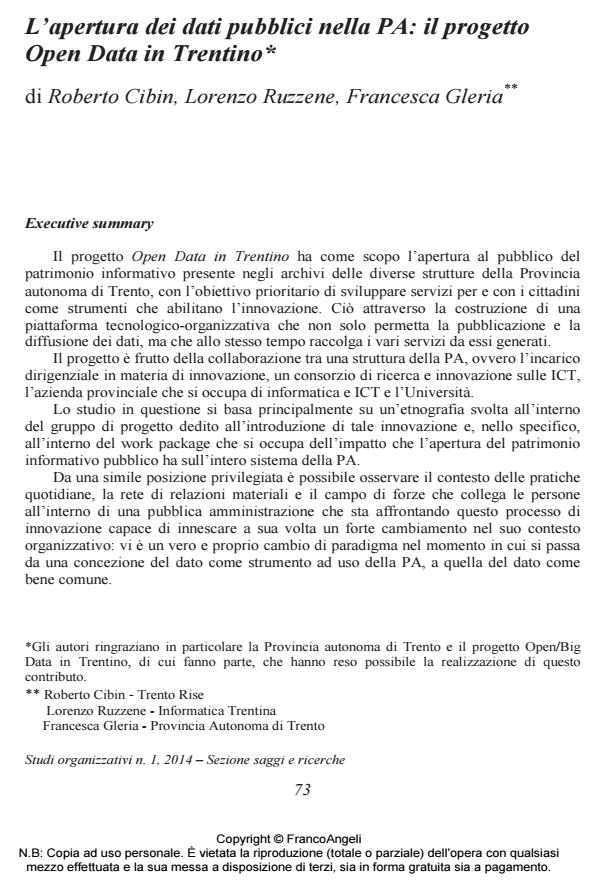L’apertura dei dati pubblici nella PA: il progetto Open Data in Trentino
Journal title STUDI ORGANIZZATIVI
Author/s Roberto Cibin, Lorenzo Ruzzene, Francesca Gleria
Publishing Year 2014 Issue 2014/1
Language Italian Pages 24 P. 73-96 File size 125 KB
DOI 10.3280/SO2014-001004
DOI is like a bar code for intellectual property: to have more infomation
click here
Below, you can see the article first page
If you want to buy this article in PDF format, you can do it, following the instructions to buy download credits

FrancoAngeli is member of Publishers International Linking Association, Inc (PILA), a not-for-profit association which run the CrossRef service enabling links to and from online scholarly content.
The aim of the Open Data in Trentino project is to "open" public sector information collected in the archives of the various offices of the Autonomous Province of Trento, in order to develop services for and with citizens as tools that enable innovation. This is done through the construction of an organizationaltechnological platform that not only allows the publication and dissemination of data, but at the same time collects the various services generated from them. The study is based primarily on an ethnography carried out within the project team which is dedicated to the introduction of this innovation and, specifically, within the work package that deals with the impact that the opening of public information produces on the public administration system. From this privileged point of view, it is easier to observe the context of daily practices and the action net through which a public administration has been changing its organizational framework through a process of innovation. The switching from a conception of data as mere public administration’s standard equipment to that of data as common good is a real paradigm shift. The production of services, which is so far only a public administration’s prerogative, is moved outside of its institutional boundaries, delegated to citizens, associations and businesses which create innovation with this data. This is a very evident realization of that principle of subsidiarity always present in the political science and legal debates.
Keywords: Open data; Public administration, Organizational Innovation, Change management; ICT.
- La governance dei sistemi locali nella società dell'informazione: un contributo dagli studi sulle reti organizzative Luca Garavaglia, in CRIOS 12/2016 pp.67
DOI: 10.3280/CRIOS2016-012007
Roberto Cibin, Lorenzo Ruzzene, Francesca Gleria, L’apertura dei dati pubblici nella PA: il progetto Open Data in Trentino in "STUDI ORGANIZZATIVI " 1/2014, pp 73-96, DOI: 10.3280/SO2014-001004